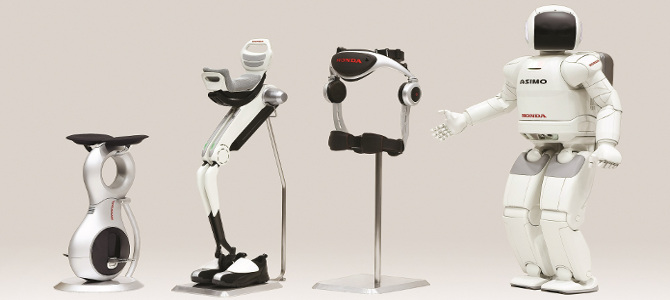
Time to get out of the lab…
Over the last decade or so, it has become increasingly fashionable for automakers to explore new forms of mobility outside of the traditional automotive paradigm. Initially much of this was the industry’s usual blue-sky “concept car” dreaming, but as Google’s pushes autonomous cars towards reality and the auto industry comes to term with the digital revolution, automakers are taking the idea of rebranding as “mobility companies” more and more seriously. But, as with most high-concept “pivots” that sound good on paper, there are real questions about how exactly a car company is supposed to expand into broader areas of mobility.
The big issues around autonomous cars –be they technological, regulatory or economic– will take some time to hash out, and it could take many product cycles before new mobility markets emerge on any kind of broad scale. But in the meantime, diversifying from automobiles to other forms of mobility may provide surprising new opportunities.
Millions of people around the world face mobility challenges of an overwhelming variety, ranging from blindness and paralysis to myriad developmental, congenital and age-related conditions. And most of these struggles for basic mobility are invisible to society, happening as they do to its most invisible members. Addressing this need may not be a big business opportunity for automakers in the short term, but it could help the industry grab back a piece of its futurist halo from Silicon Valley. If Tesla’s astonishing rise proves anything, it’s that there’s a deep public desire to see automakers taking big risks to make the world a better place.
In the long run, there may even be some business sense in this form of mobility evangelism. As people in developed markets live longer, issues around aging drivers will continue to intensify creating another “distracted driving”-type PR headache for the industry. More importantly, with wealth in most developed markets concentrating in older populations, at some point there will be far more money in solving age-related mobility challenges than selling traditional cars to young people and developing markets. Best of all, the personal mobility market is largely “served” by dismally-designed, low-quality products with little to no name brand recognition.
In Europe and Japan, where aging populations are a reality that can not be ignored, this vision is fairly well understood. Honda’s UNI-CUB, a kind of motorized unicycle that makes the Segway look like a Model T, is the latest in a growing line of personal mobility-related concepts from Japanese automakers. But amidst the trucks and supercars on display at Detroit’s Cobo hall, personal mobility concepts like the UNI-CUB seem deeply at odds with the deeply-ingrained wide-open road mythos of the American automobile market. After decades of car ads promising the freedom of off-road adventures or winding road heroics, it’s hard to see automakers seriously associating themselves with the simple freedom leaving your bed or your home.
There are, after all, a near infinite number of ways to interpret what it means for an automaker to become a mobility company. Honda’s forthcoming Honda Jet, touted as an innovative competitor to corporate jets, is one whose efficacy as a brand-builder will be tested when it goes on sale later this year. Urban mobility concepts designed to reduce congestion and emissions in urban cores have been shown by every major automaker, and despite challenges to early commercial efforts like the Renault Twizy the number of pilot programs in the space continues to grow.
Not all of these new mobility segments have natural synergies with the auto business, and all are long-term plays that won’t bear fruit for years. But with automotive technology reaching a mature state and global sales growth for traditional cars flattening, these new forms of mobility are a natural diversification. And if the hunt for new business opportunities is alloyed with a sense of mission to deliver mobility to those who silently struggle without it, the auto industry might just reclaim its place as a driving force for human progress.





